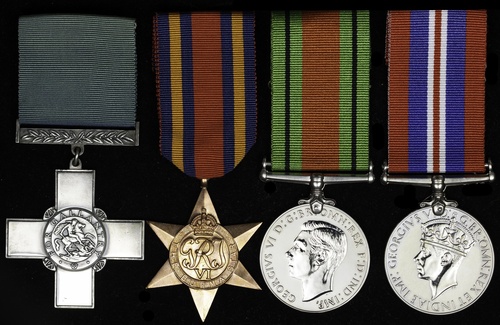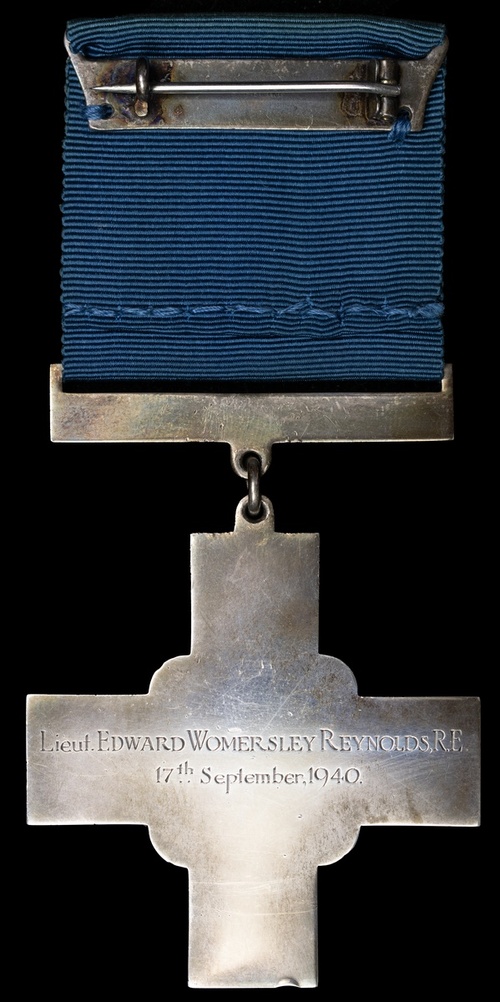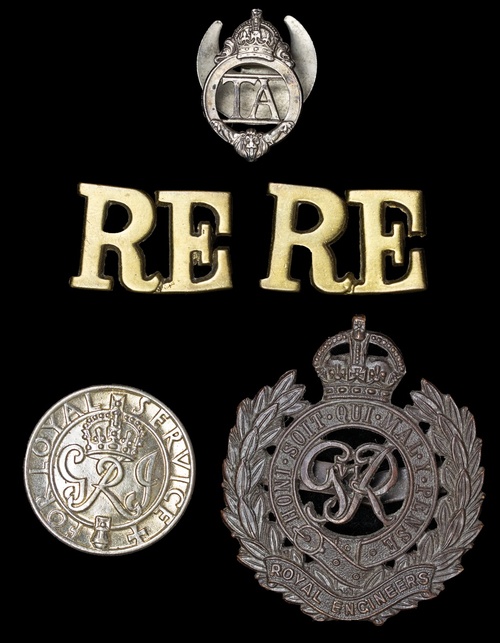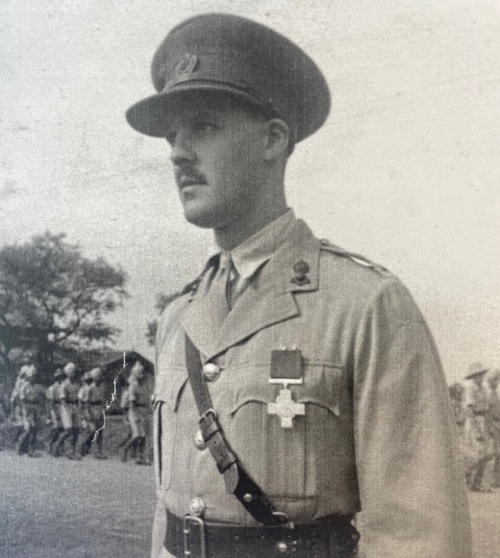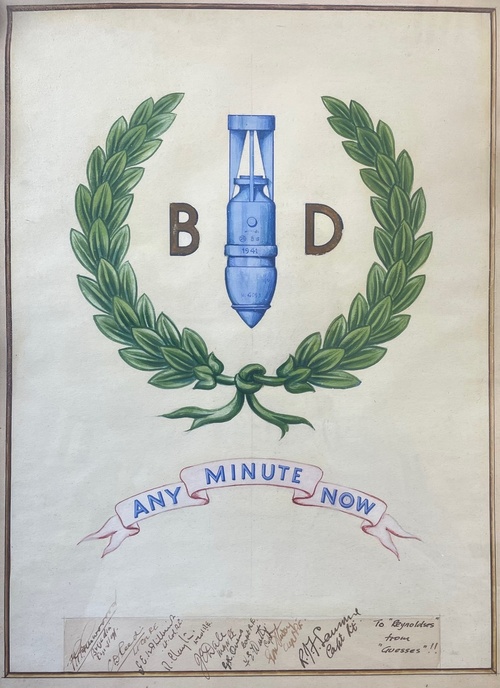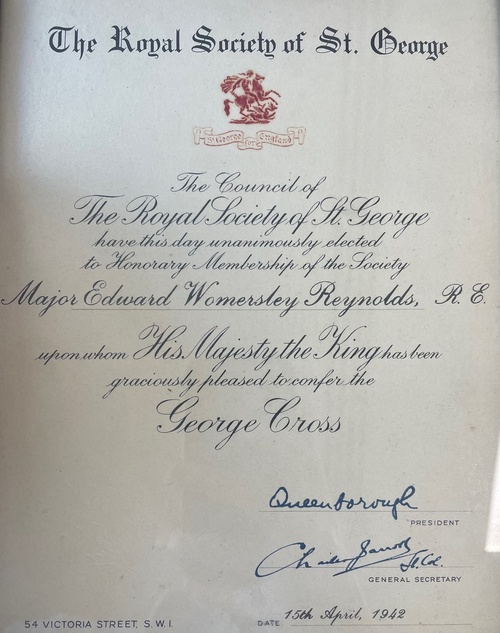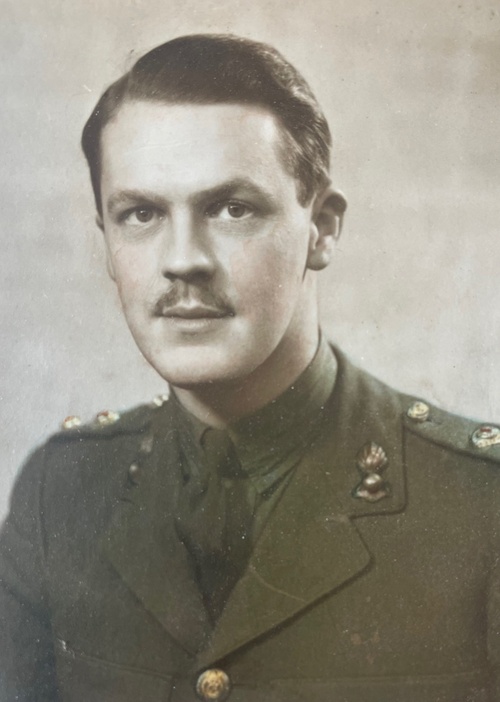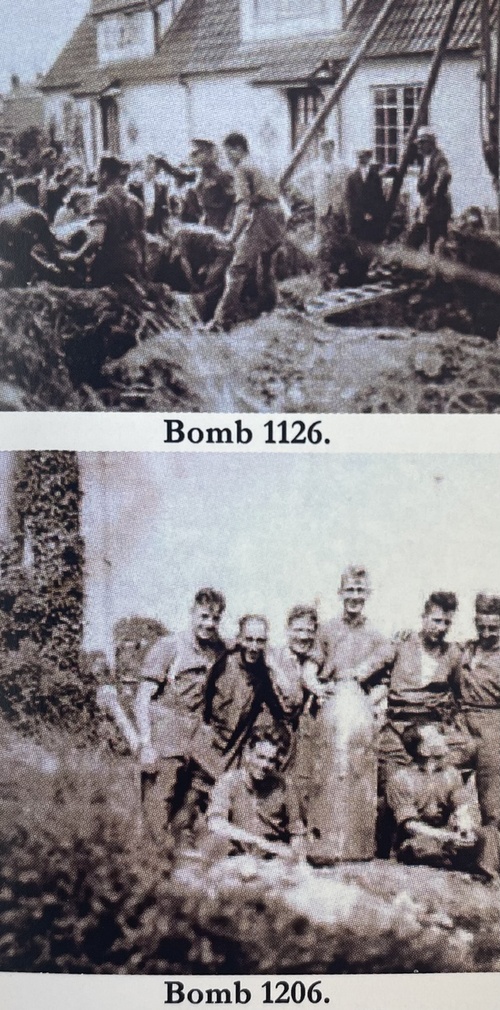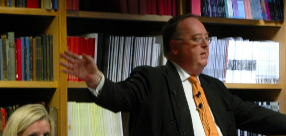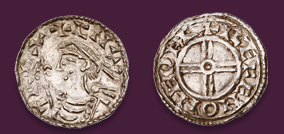Auction: 25111 - Orders, Decorations and Medals - e-Auction
Lot: 675
Sold by Order of a Direct Descendant
The outstanding Second World War 1940 G.C. (E.G.M. 'translation') group of four awarded to Major E. W. Reynolds, Royal Engineers
In his work with 101 & 102 Bomb Disposal Sections, his mastery in tackling novel enemy bombs came to the fore, including on two occasions in August & September 1940, when twice successfully defusing two 250kg devices in and around Bristol - a false move on either occasion would have been fatal - his award being promulgated just a week before the institution of the G.C. itself, he would eventually take his decoration from the hands of the Duke of Gloucester whilst out in India in July 1942; that was to be the first occasion that the ultimate award for civilian gallantry would be conferred in India
George Cross (Lieut. Edward Womersley Reynolds, R.E. 17th. September, 1940.), on its investiture pin and in Royal Mint case of issue; Burma Star; Defence and War Medals 1939-45, these last three all in their cases of recent issue, with labels stating 'Maj E Reynolds P/67382', good very fine (4)
Exhibited:
Lord Ashcroft Gallery, Imperial War Museum, London.
E.G.M., latterly 'translated' to the G.C. (V.C. & G.C. Association, refers) London Gazette 17 September 1940:
'The King has been graciously pleased to approve the following Awards:– The Medal of the Military Division of the Most Excellent Order of the British Empire, for Gallantry:
Lieutenant Edward Womersley Reynolds, 101 and 102 Bomb Disposal Sections, R.E. On 17th August, 1940 [Congresbury, Somerset], a 250 kilo bomb fell in a garden amongst some council houses; it did not explode and Lieut. Reynolds was sent to investigate. On digging down 17 ft., he found that it had a new type of fuse about which no instructions had at that time been received. Finding that traffic was suspended on the road and that inhabitants had had to be cleared out of their houses, he removed the fuse and found that it had a clockwork delayed action. The risk he took was great, and merit of his action was the greater for lack of exact knowledge of the type of fuse he was dealing with.
On 3rd September, 1940 [Temple St, Bristol]. – A large bomb fell in a street just before midnight on September 1st, 1940; it wrecked the front of some business premises and was supposed to have exploded. About 16.30 hours on the 3rd September, a 250 kilo unexploded bomb was found in the debris. Lieut. Reynolds was at once summoned, found that it had a clockwork fuse which was still ticking and according to orders applied to Regional H.Q. for instructions suggesting that the sooner it was dealt with the better, and stating that he was willing to do so forthwith. In view of the damage to property that would have been caused by the explosion of such a large bomb in such a congested area and especially of the possible effect on the public morale permission was given and Lieut. Reynolds immediately extracted the fuse and rendered the bomb inoperative. The risk in doing this was very considerable.'
Edward Womersley Reynolds was born on 27 June 1917, the second son of John and Brenda Reynolds. The family lived in Harborne, his father was the managing director of the family business and also President of the Royal Astronomical Society 1935-37. The grandfather had been Lord Mayor of Birmingham and also Governor of the University, so the young man had much to live up to. Young Reynolds went to West House School, Edgbaston and then to Repton before joining the family firm, which manufactured nails.
Joining the Territorial Army, he was commissioned 2nd Lieutenant into the 48th Division and was promoted Lieutenant in April 1939. Reynolds is understood to have served in France with the B.E.F. and was evacuated with pneumonia in February 1940. Having recovered, he joined 102nd Bomb Disposal Section at Barton Stacey.
It was to be with that unit and 101st Section that he won his George Cross, had the award been promulgated just a week later it would have been a 'pure' award. Nonetheless, his actions are worthy of the praise which was eventually showered down. Reynolds performed numerous acts of selfless bravery in the face of novel enemy bombs which had been dropped during wartime upon Bristol and its environs. His G.C. was to be presented from the hands of the Duke of Gloucester at Government House, Ganeshkind in July 1942. It was the first occasion that the G.C. had been presented in India.
Reynolds was posted out to the Bomb Disposal Training Centre as Commandant at Kirkee in January 1941. Eventually advanced Major, he was released from the Army in June 1946, having been struck down with cerebral malaria in 1945.
A lover of hill-climb sports cars, model railways and classical music, Reynolds returned to the fold of the family firm and married Margaret (Meg) in October 1949. The good Major died on 14 December 1955, with issue of one son, who continues to proudly represent the family at the various V.C. & G.C. Association gatherings. He is commemorated via a painting at Repton and upon the board at the Royal Engineers Museum, Chatham.
Sold together with his T.A. Badge, reverse numbered '92653', King's Badge, besides his Royal Engineers cap Badge and 'RE' titles, besides copies of his Royal Society of St George Certificate & a 'BD (Bomb Disposal) Any Minute Now' framed painting.
Subject to 20% VAT on Buyer’s Premium. For more information please view Terms and Conditions for Buyers.
Sold for
£20,000
Starting price
£20000

